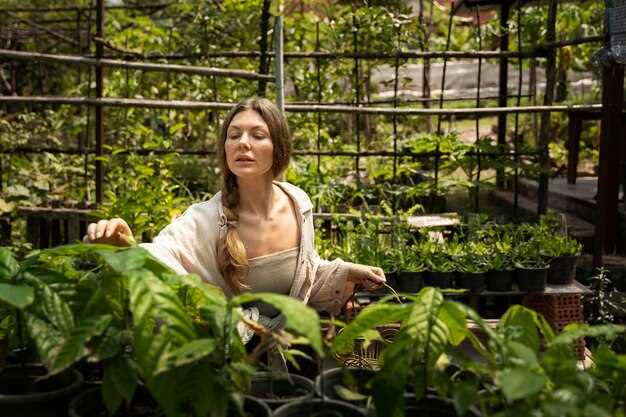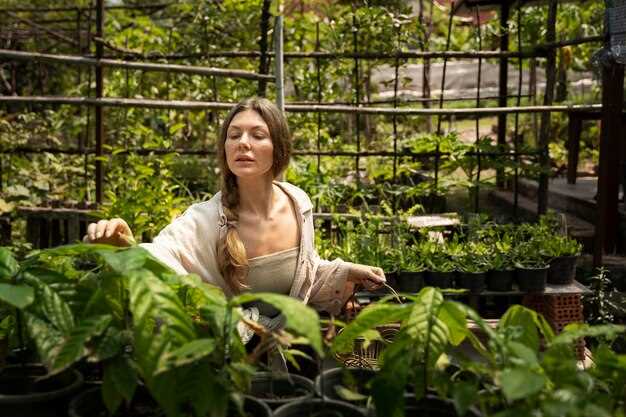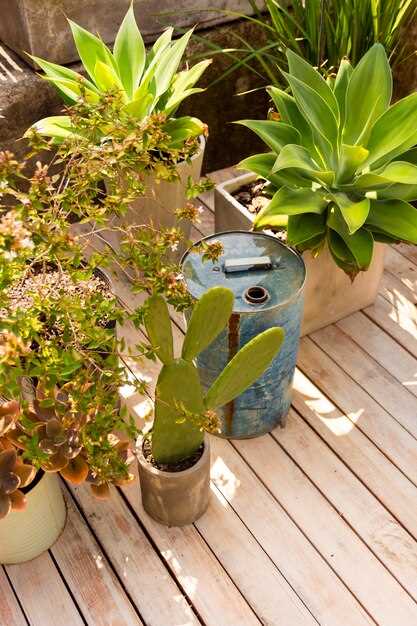
Balcony Garden Ideas: Creating a Green Oasis in Nicaragua
Transform your balcony into a lush green oasis by incorporating local plant varieties that thrive in Nicaragua’s tropical climate. Start with ornamental grasses like pampas grass, which adds texture and height, or choose ficus and dracaena for their easy maintenance and rich foliage.
Utilize vertical space effectively. Install wall planters or trellises to grow climbing plants such as passionflower or morning glory. These not only create a stunning visual effect but also maximize your garden space. Adding hooks for hanging pots can bring in cascading plants like trailing rosemary or string of pearls, adding layers to your balcony ambiance.
Consider integrating edible plants. Herbs like basil, cilantro, and mint flourish in containers and can enhance your culinary experiences. Pair them with colorful annual flowers like marigolds to deter pests naturally. Regular harvesting encourages growth, ensuring fresh ingredients at your fingertips.
Implementing drip irrigation helps keep plants hydrated without drowning them. This is particularly effective in ensuring your balcony remains lush even during dry spells. Use decorative pots to elevate the aesthetics while providing drainage for your plants.
Create a relaxing atmosphere by incorporating comfortable seating and outdoor lighting. Use string lights or lanterns to illuminate your space, allowing you to enjoy evenings surrounded by greenery. A small table with vibrant cushions can transform your balcony into a cozy retreat.
Choosing the Right Containers for Your Balcony Garden

Select containers that fit your available space and align with the plants you wish to grow. Opt for lightweight materials like plastic or fiberglass to make rearranging easier, especially if your balcony receives varying amounts of sunlight. Terra cotta pots offer excellent drainage and a classic look, but they can be heavy and may require more frequent watering in hot weather.
Size and Depth Matter
Choose pots that have ample depth for root growth. For herbs, a depth of around 12 inches works well, while vegetables may need 18 inches or more. Additionally, larger containers can hold more soil, which helps retain moisture and reduces the frequency of watering. Group larger pots together to create a mini-garden feel, or use smaller ones for easy maintenance and flexibility.
Drainage and Mobility
Ensure your containers have proper drainage holes to prevent waterlogging, which can damage plant roots. Consider adding a layer of gravel or stones at the bottom of your pots for enhanced drainage. If you enjoy rearranging your garden regularly, look for pots with built-in wheels or consider using plant caddies for easy movement.
Ideal Plants for Container Gardening in Nicaragua’s Climate

Choose heat-tolerant plants that thrive in Nicaragua’s warm temperatures. Consider incorporating ornamental peppers for vibrant color and easy care. They adapt well to container life and offer a delightful display of various hues.
Herbs like basil, oregano, and cilantro grow quickly and require minimal maintenance. These not only enhance your dishes but also thrive in the sunny conditions typical of Nicaragua.
Succulents are perfect for low-water needs. Varieties such as aloe vera and sedum tolerate both heat and occasional drought, making them ideal for busy gardeners.
If you prefer flowering plants, geraniums and petunias flourish in containers and bring vibrant blooms throughout the year. Their aromatic flowers attract local pollinators, benefiting your garden’s ecosystem.
For a tropical vibe, opt for palm trees in larger containers. Varieties like the Areca palm thrive in the region’s humidity and create a lush ambiance.
Lastly, fruiting plants such as cherry tomatoes and bell peppers produce abundant harvests. They flourish in containers and provide fresh produce right from your balcony.
Maximizing Space with Vertical Gardening Solutions

Install wall-mounted planters to take advantage of vertical space. These planters allow you to grow herbs, succulents, and flowers while keeping the floor area open.
Use trellises to support climbing plants like beans, tomatoes, or cucumbers. Position them against walls or railings to create a green backdrop without consuming much ground space.
Consider vertical garden kits that combine planters and irrigation systems. These kits simplify maintenance and provide a neat, organized look while maximizing your growing area.
Repurpose wooden pallets as vertical gardens. Horizontally stack or lean pallets against walls, filling them with soil and seeds for an eco-friendly and cost-effective solution.
Hang a series of small pots on a decorative ladder or shelving unit. This adds greenery at different heights and enhances the visual interest of your balcony.
Utilize vertical frames with pockets or mesh for planting. These can hold small plants or herbs and attach directly to walls, providing easy access and a unique display.
Make use of hooks and brackets to suspend pots from the balcony railing. This technique allows for a layered garden effect without sacrificing floor space.
Incorporate a vertical garden wall made from felt or fabric. These walls can house a variety of plants and enhance airflow and drainage, creating a healthy growing environment.
Choose lightweight materials like plastic or fabric for your vertical gardening options. This makes installation easier and reduces the load on your balcony structure.
Ensure proper sunlight exposure by arranging taller plants at the back and shorter ones in front. This helps each plant receive adequate light without blocking others.
Tips for Elevating Your Balcony Design with Hanging Gardens
Incorporate various hanging planters to create depth and visual interest. Use materials like macrame, metal, or bamboo for an eclectic mix. Choose different sizes to group plants effectively, allowing for an attractive layering effect.
Select the Right Plants
- Opt for trailing varieties such as pothos, string of pearls, or ivy to enhance the cascading effect.
- Incorporate flowering plants like nasturtiums or petunias for added color and fragrance.
- Consider herbs like basil or mint, which thrive in smaller spaces and offer culinary benefits.
Maximize Space and Light
- Utilize wall-mounted shelves to free up floor space, allowing for more plants and creative arrangement.
- Position hanging gardens near sunny areas; use light-colored planters to reflect light and maximize growth.
- Employ vertical gardening techniques, stacking planters or using trellises to enhance vertical space.
Regularly rotate plants to foster growth and maintain an appealing aesthetic. Keep an eye on the watering needs; hanging plants can dry out faster. Use self-watering systems for convenience and consistency.
Creating a Sustainable Watering System for Balcony Gardens
Utilize a drip irrigation system to deliver water directly to the roots of your plants, minimizing waste. This method ensures that water goes where it’s needed most. You can purchase a DIY kit or create one using a few basic supplies: tubing, emitters, and a water source.
Consider installing a rainwater collection system. Set up a barrel on your balcony to capture rainwater, which can then be used to irrigate your plants. Ensure that the barrel has a cover to prevent mosquitoes from breeding.
Use self-watering pots to maintain moisture levels consistently. These pots come with a reservoir that allows plants to draw water as needed. This system reduces the frequency of watering while preventing over-saturation.
Create a watering schedule based on your plants’ needs. Observe how much water your plants require daily or weekly. Adjust the frequency as seasons change or as weather patterns shift. During the hot season, for instance, you might need to water more frequently, while cooler months may require less water.
Incorporate moisture-retaining materials into your soil mix, such as coconut coir or perlite. These materials help soil maintain moisture, reducing the need for frequent watering.
- Apply mulch to pot surfaces. Organic mulches, like wood chips, reduce evaporation.
- Group plants with similar water needs together to simplify irrigation.
- Monitor plants closely for signs of drought stress, such as wilting leaves, and adjust watering levels accordingly.
Integrate a simple timer with your irrigation system. A timer automates the watering process, ensuring consistency even when you are away. Set it to run during cooler parts of the day to minimize evaporation.
Enhance your balcony garden’s sustainability by recycling water from household activities, like rinsing fruits or veggies. This eco-friendly practice provides another source of hydration for your plants.
Regularly check and clean your watering system to prevent clogs and ensure proper functioning. This maintenance helps safeguard your plants from water stress and promotes healthy growth.
Colorful Flower Combinations for a Vibrant Balcony Garden
Choose marigolds and petunias for a striking contrast. Their warm orange and deep purple hues create an inviting ambiance. Marigolds thrive in sunny spots while petunias add cascading beauty.
Eye-catching Duo: Bougainvillea and Geraniums
Bougainvillea’s vivid magenta or orange flowers paired with bright red or pink geraniums form an exhilarating combination. Bougainvillea enjoys the heat and blooms profusely, while geraniums provide a charming touch with their lush foliage and colorful petals.
Soft Elegance: Lavender and Snapdragons
For a softer palette, combine lavender with snapdragons. The soothing purple of lavender complements the tall spikes of snapdragons, which bloom in various colors from white to deep red. This mixture not only pleases the eye but also exudes delightful fragrance.
Don’t forget to mix in some foliage plants like ferns or succulents. Their diverse textures enhance the overall richness of your balcony garden, providing contrast and depth to your floral arrangements. Create layers with trailing plants such as creeping thyme or ivy to soften edges and add dimension.
Regularly deadhead spent flowers to encourage more blooms and maintain the garden’s freshness. Watering carefully and ensuring good drainage will keep your plants thriving, allowing your balcony to flourish with color indoors or outdoors in Nicaragua’s climate.
Herb Gardening: Fresh Flavors at Your Fingertips
Grow herbs on your balcony to enjoy fresh flavors right at your fingertips. Choose pots that fit your space and ensure they have drainage holes. Herbs thrive in well-drained soil; a mix of potting soil and perlite works great. Here’s a list of easy-to-grow herbs perfect for a Nicaraguan balcony:
- Basil: Loves warm weather and grows quickly. Pinch off the tops to encourage bushier growth.
- Mint: Vigorous grower; plant it in a separate pot to control its spread. Great for teas and cocktails.
- Cilantro: Prefers cooler temperatures; sow seeds directly in pots. Harvest leaves regularly to promote new growth.
- Thyme: Thrives in full sun; keep soil dry between waterings. Use it as a seasoning for various dishes.
- Rosemary: Requires lots of sunlight; prune it regularly to maintain shape and encourage growth.
Maintenance Tips
Water herbs when the top inch of soil feels dry, but avoid overwatering. Fertilize every four to six weeks with a balanced fertilizer. Use organic options like compost or seaweed extract for healthier plants. Pests can be managed with neem oil or insecticidal soap if needed.
Harvesting
Begin harvesting once your herbs are well-established. Always take leaves from the outer part of the plant, allowing the center to continue growing. Regular harvesting supports healthy growth and ensures you have fresh flavors for your meals.
Transform your balcony into a green oasis full of fragrant herbs. Enjoy cooking with them or use them to enhance your drinks for refreshing flavors in every sip.
Utilizing Vertical Pallet Gardens for Limited Spaces
Repurposing wooden pallets into vertical gardens maximizes your balcony space, allowing you to grow herbs, flowers, or small vegetables in a compact area. Start by sourcing clean, untreated pallets to avoid chemical contamination. Secure them to the wall or fence for stability.
Line the back of the pallet with landscaping fabric to retain soil while allowing drainage. Add potting soil to each section, ensuring it’s packed firmly to support plant roots. Herbs like basil, thyme, and parsley thrive in these gardens, while vibrant flowers can add a splash of color.
Create a planting schedule to ensure your garden remains productive. Rotate crops and plant seasonal varieties for continuous growth. Consider using a drip irrigation system or self-watering planters to manage watering effortlessly.
| Plant Type | Spacing Requirements | Sunlight Needs |
|---|---|---|
| Basil | 12 inches apart | Full sun |
| Thyme | 8 inches apart | Full sun |
| Petunias | 10-12 inches apart | Full sun to partial shade |
| Cherry Tomatoes | 18-24 inches apart | Full sun |
Monitor for pests and disease regularly. Use organic insecticides or natural remedies to protect your plants without harmful chemicals. A vertical pallet garden enables you to enjoy a flourishing green space while optimizing limited balcony area.
Seasonal Care and Maintenance of Your Balcony Garden
Regularly check your plants for pests. Use organic insecticidal soap to treat infested areas if needed. Pay attention to the undersides of leaves where insects like to hide. Remove any yellowing or dead leaves to keep your plants healthy.
During the dry season, water your balcony garden deeply but less frequently. This encourages root growth and drought resistance. Use mulch to retain moisture and suppress weeds. Choose materials like straw or wood chips that break down and enrich the soil.
Spring Tasks
In spring, assess your garden beds and pots. Fertilize with a balanced organic fertilizer to promote growth. Start seeds indoors for heat-loving plants and transplant them outside once the threat of frost has passed. Prune any overgrown plants to encourage bushier growth.
Fall Preparations
As fall approaches, prepare for cooler temperatures. Bring sensitive plants indoors or create a protective barrier on your balcony. Reduce watering as growth slows down. Consider planting cover crops in pots, like clover, to enrich the soil for next season.
Incorporating Edible Plants for a Functional Balcony Garden
Opt for a selection of herbs that thrive in the tropical climate of Nicaragua, such as basil, cilantro, and rosemary. These plants not only enhance your cooking but also provide a fragrant touch to your balcony garden. Arrange them in window boxes or vertical planters to save space and maximize sunlight exposure.
Vegetables That Flourish
Consider growing compact vegetable varieties, such as cherry tomatoes, peppers, and lettuce. These options require minimal space while offering a rewarding harvest. Use deep containers for tomatoes and peppers, as they need ample root room. Lettuce can thrive in shallow pots, allowing you to harvest fresh leaves regularly.
Fruit Choices for Small Spaces
Strawberries and dwarf citrus trees make excellent additions to your balcony garden. Strawberries can be grown in hanging pots or vertical planters, making them visually appealing and practical. Dwarf citrus trees, like calamondin oranges, provide fruit and aroma without requiring much space. Make sure these plants receive adequate sunlight and water for optimal growth.
| Plant Type | Light Requirements | Container Size | Harvest Time |
|---|---|---|---|
| Basil | Full Sun | 6-8 inches deep | 8 weeks |
| Cherry Tomatoes | Full Sun | 12 inches deep | 60-80 days |
| Strawberries | Full Sun | 8-10 inches deep (hanging pot) | 4-6 weeks |
| Dwarf Citrus | Full Sun | 12-16 inches deep | 1-3 years |
Selecting edible plants transforms your balcony into a functional and delightful space. Enjoy the bounty of fresh herbs, vegetables, and fruits right at your fingertips while adding beauty to your outdoor area.
DIY Projects to Personalize Your Balcony Garden Setup
Create vertical planters using wooden pallets. Simply sand down the pallets to avoid splinters, then secure them vertically against a wall or railing. Fill the slats with soil and plant herbs or flowers. This maximizes space while adding greenery to your balcony.
Customized Plant Labels
Add charm and organization with handmade plant labels. Use small wooden stakes or paint rocks, then label each with the plant’s name. This enhances the aesthetic while helping you remember which plants are which, making care easier.
Hanging Herb Garden
Transform empty mason jars into a hanging herb garden by attaching them to a wooden board with hooks. Fill each jar with soil and your favorite herbs. Hang the board on a wall or balcony railing, creating a functional yet decorative feature.
Consider making a cozy seating area by incorporating repurposed furniture. An old chair or a small bench can serve as a perfect spot to relax amid your lush plants. A coat of weather-resistant paint can refresh and personalize these pieces.
Wind chimes made from recycled materials can enhance the ambiance. Use old silverware or bamboo sticks to create a musical element that adds an extra sensory touch to your garden.
Designing Cozy Seating Areas within Your Green Space
Create inviting seating spots using comfortable, weather-resistant furniture. Opt for a compact loveseat or hammock that fits into your space while offering relaxation. Consider choosing natural materials like rattan or teak for durability against Nicaragua’s climate.
Incorporating Natural Elements
Add cushions with bold patterns to bring color and comfort. Select plants that can thrive in pots near seating areas, offering natural shade and enhancing the atmosphere. Use climbing vines on trellises or hanging plants to create a living green wall that offers privacy and a lush backdrop.
Utilizing Multi-Functional Furniture
Select furniture that serves dual purposes, such as stools that can act as plant stands or tables. Include a small coffee table for drinks and snacks, ensuring it complements the overall design. Integrate storage beneath benches for gardening supplies or cushions, keeping the area clutter-free.
Lighting plays a key role in setting the mood. Install soft string lights or lanterns to create a warm ambiance in the evening. Position lights around the seating area to enhance visibility while maintaining a cozy feel. This combination transforms your balcony into a relaxing retreat, perfect for enjoying those lush greenery surroundings.
Video:
Creating a Balcony Garden (For Complete Beginners)
Creating a Balcony Garden (For Complete Beginners) by Epic Gardening 77,137 views 6 months ago 11 minutes, 53 seconds
Q&A:
What types of plants are best suited for a balcony garden in Nicaragua?
In Nicaragua’s warm climate, consider plants that thrive in sunny conditions. Tropical flowers like hibiscus, bougainvillea, and marigolds can add bright colors. For greenery, ferns and succulents like aloe or jade are ideal. Additionally, herbs such as basil, cilantro, and mint can grow well in pots and provide both aesthetics and culinary benefits.
How can I optimize my small balcony space for gardening?
To make the most of a small balcony, use vertical gardening techniques. Install wall planters or shelves to grow herbs and flowers upwards. Hanging pots can also save space while adding greenery. Consider using compact or dwarf varieties of larger plants, and incorporate multi-functional furniture like a bench with storage that can also serve as a planting area.
What materials should I use for containers in my balcony garden?
Opt for lightweight materials like plastic or fiberglass for ease of movement, especially in windy conditions. Terracotta is a popular choice, but it can be heavy; ensure proper drainage to avoid overwatering. Consider using recycled materials, such as old wooden crates or cans, which can add a rustic charm to your garden while being eco-friendly.
How can I maintain my balcony garden during the dry season in Nicaragua?
During dry months, it’s crucial to water regularly, ideally early in the morning or late in the afternoon to reduce evaporation. Mulching the soil can help retain moisture. Also, consider using self-watering pots that supply a constant level of hydration. Additionally, grouping plants together can create a more humid microclimate, benefiting them during the heat.
What are some creative ideas for decorating a balcony garden?
To decorate your balcony garden, use colorful cushions and outdoor rugs to create a welcoming space. String lights can add ambiance for evening enjoyment. Incorporate decorative planters or sculptural pieces to enhance visual interest. A trellis with climbing plants can also serve as a beautiful backdrop. Personal touches, like handmade signs or wind chimes, can further customize your green oasis.
What are some easy plants to grow in a balcony garden in Nicaragua?
In Nicaragua’s warm climate, some great plants to consider for a balcony garden include tomatoes, basil, and peppers. These plants thrive in the sun and don’t require a lot of space. You can also try herbs like mint and rosemary, which are perfect for adding flavor to your meals and can be grown in small pots. Succulents and cacti are also excellent choices; they need minimal water and manage well with limited care.
How can I make my balcony garden more visually appealing?
To enhance the visual appeal of your balcony garden, consider using a variety of containers in different shapes, sizes, and colors. Vertical gardening is a great technique; using wall-mounted planters or hanging baskets can add depth. Adding decorative items like garden gnomes, fairy lights, or unique stones can create a whimsical atmosphere. Additionally, incorporating a seating area, like a small bistro table and chairs, can turn your garden into a cozy retreat where you can relax and enjoy your green sanctuary.





